I’ve been reading The Wheel of Time since the late 1990s and I still can’t imagine letting a year go by without reading or listening to the entire fourteen book series at least once. The world Robert Jordan created feels like home to me, the characters old friends. After all these years I’m still finding depth and nuance that enriches my experience and entices me to come back for more. Which is why I wanted to write something that (I hope) will help other readers enjoy these books as much as I do.
My goal with this introduction to the books was to piece together a streamlined summary of the lore and history of The Wheel of Time, beginning with the simple creation myth that lives at the heart of this fictional universe and ending with the events leading up to the first book, The Eye of the World.
In many ways, this is an introduction for re-readers of The Wheel of Time as much as for new readers. The information needed to create it wasn’t available to the public until the final books of the series came out. Meaning a full picture of important in-world events wasn’t even possible to create for the twenty-odd years the series was being written and published (1990-2013). For longtime fans of the series, maintaining a mental draft of this lore between new releases was a big part of The Wheel of Time experience. I’ve just decided to write my version out. I sincerely hope you enjoy it and if you have any questions or comments please drop me a line in the comments section below.
A Note on Spoilers
It’s impossible to write an article like this without including information that’s revealed strategically throughout the series. Sometimes in ways that create extra tension or intrigue while the reader and specific characters are kept in the dark. However, I’ve tried to present this information in a way that would enhance a reader’s enjoyment of the books, not ruin it with details of major plot points. That said, if you’re trying to avoid spoilers of all kinds, do not read this article. If on the other hand you enjoy reading stories (especially epic fantasy series) with a clear understanding of their fictional world and history, then read on.
Wheel of Time Map
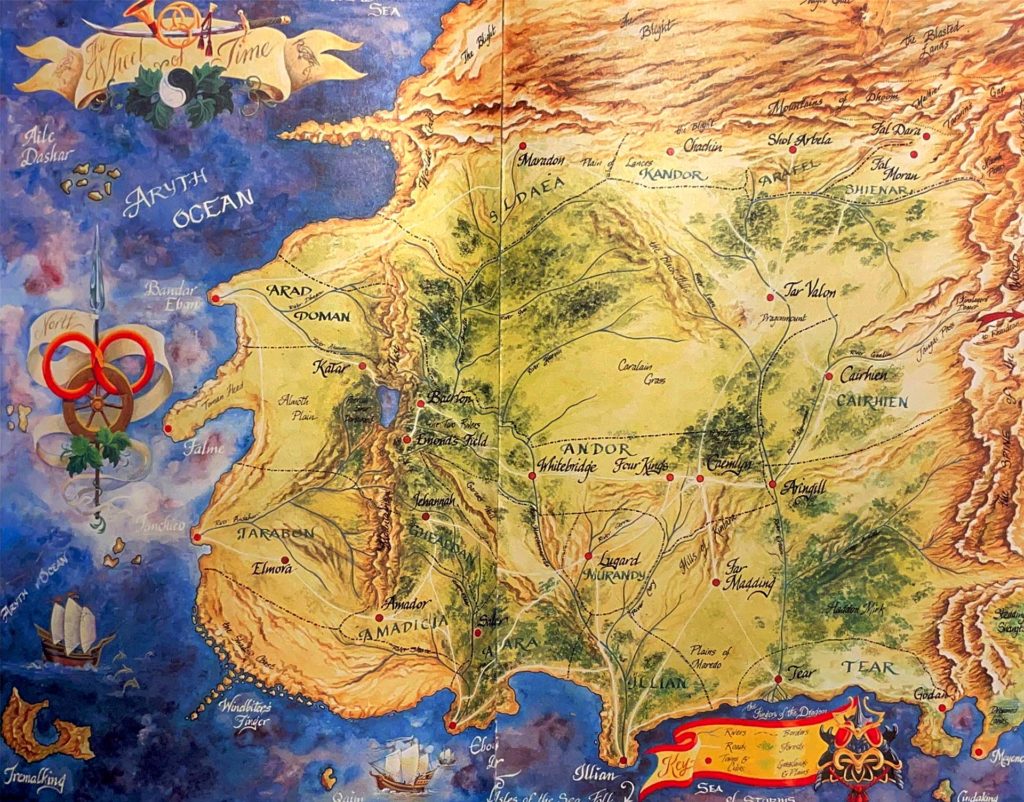
This map represents the main body of land (and its surrounding oceans and seas) on which the bulk of the events happen in The Wheel of Time. The borders are drawn to represent the nations as they existed during the tail end of the Third Age–which for the purposes of this article I call the Late Third Age.
Basic World Mythology & Important Events Leading Up to The Eye of the World (WoT Book 1)
The Wheel of Time turns, and Ages come and pass, leaving memories that become legend. Legend fades to myth, and even myth is long forgotten when the Age that gave it birth comes again. In one Age, called the Third Age by some, an Age yet to come, an Age long past, a wind rose in the Mountains of Mist. The wind was not the beginning. There are neither beginnings nor endings to the turning of the Wheel of Time. But it was a beginning.
This is the first paragraph of The Wheel of Time series. A variation of it is repeated at the beginning of each book and it gives us important insight into the universe the books take place in. Such as the circular nature of time, the relationship between real events and the stories they inspire, and the sense that perhaps we too might belong to this world, but in a different age or another turning of the Wheel. This sensation is heightened by the way Jordan references, re-purposes, and re-mixes real-life historical events, people, literature, and mythological traditions throughout his fictional world. He does this by framing his story with a creation myth that lends itself to explaining not only how a single people, land, or even world came to be–but how a multiverse came to be and everything inside it.
Basic In-World Creation Myth

In the universe of The Wheel of Time, time is represented by a wheel with seven spokes in which each spoke represents an age. Every turning of the wheel represents seven ages and there is no way of knowing how many times the wheel has turned.
The turning of the wheel is said to weave the Pattern of the Lace of Ages. A multi-dimensional tapestry in which the lives of every person is a thread. The designs these threads create when intertwined (through the turning of the wheel and the events of people’s lives) form every possible reality–past, present, and future.
Outside it all, there are two beings: the Creator and the Dark One. The Creator, who built the Wheel and began the weaving of the Pattern, has imprisoned the Dark One. Naturally, the Dark One wants nothing more than to escape his prison and dismantle the Creator’s work; to break the Wheel, end time, and destroy the Pattern.
The First Age
By the Late Third Age, when the main events of The Wheel of Time series take place, the First Age had almost completely faded from recorded history and collective memory. A handful of artifacts no one understood and distorted folktales told by storytellers called Gleemen were all that remained. As a result, very little is revealed about the First Age. However, it is hinted at several times throughout the books that the First Age is our age; the readers’ real lives. And the lives and in-world mythology described in the series are familiar to us as echos and fragments of our own historical and literary traditions.
The Age of Legends
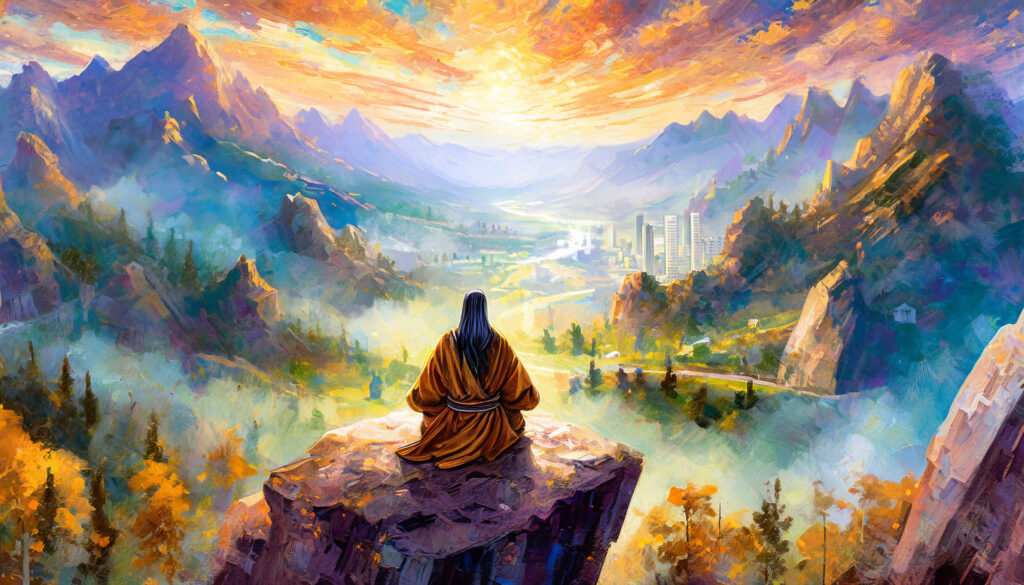
The Second Age, more commonly referred to as the Age of Legends, eventually emerged from the misty past to become an age of unparalleled prosperity, peace, and high technology. A time of equality and harmony between men, women, and all races (including Ogier and other mythical creatures).
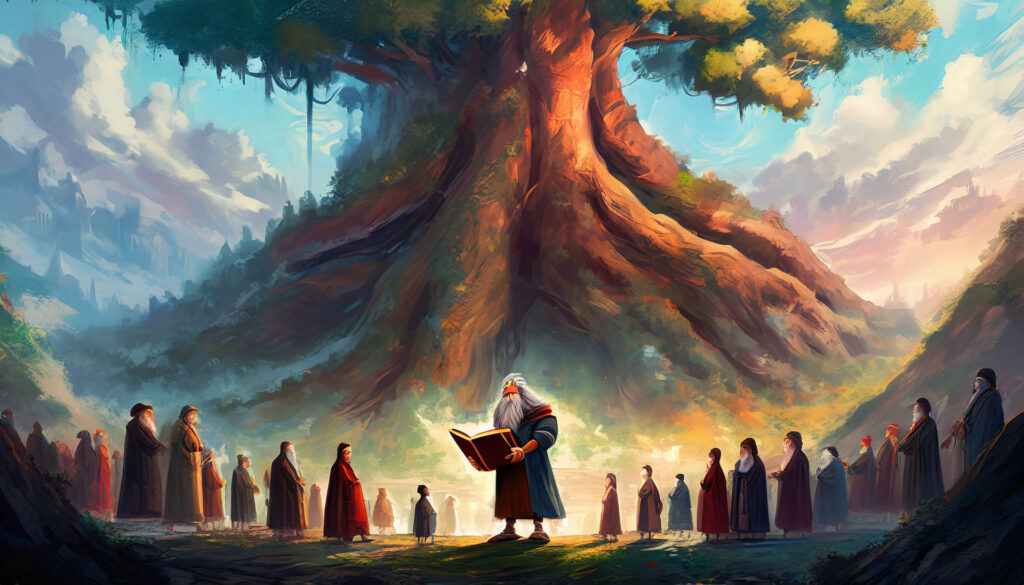
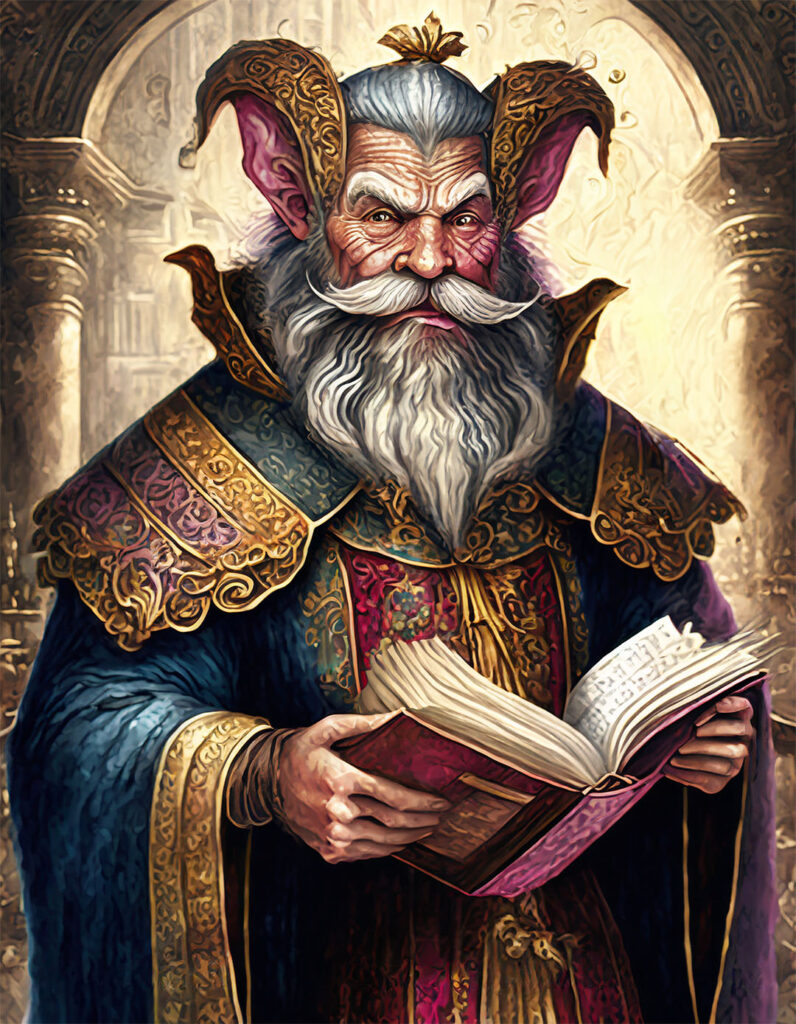
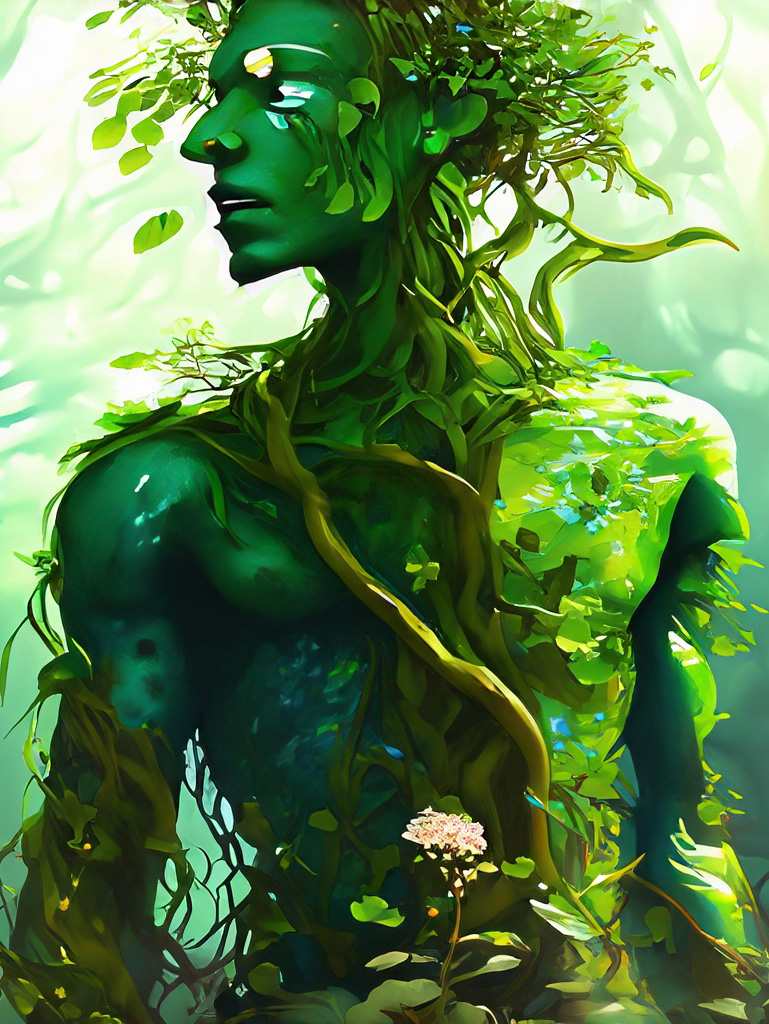
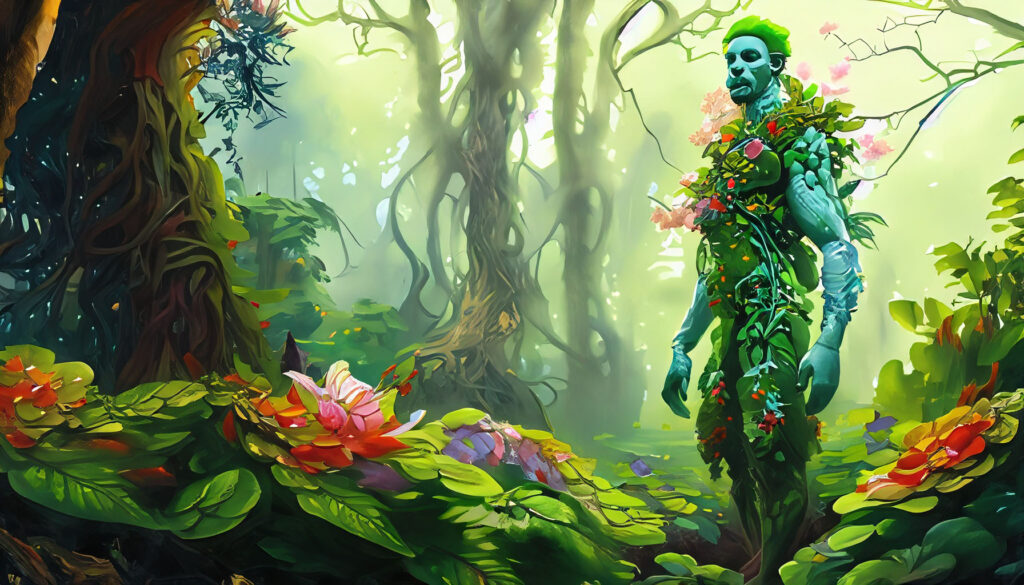
The Age of Legends was a time when the strongest, most powerful people in the world–the Aes Sedai or “servants of all”–governed wisely from a place called the Hall of the Servants. Their order was dedicated to finding, training, and placing into service to society people who had the ability to Channel the One Power.

This Power (the very force that turns the Wheel) was itself made of two halves; Saidin, accessible by male Channelers, and Saidar, accessible by female Channelers. Each half of the Power could be used to do the same things, but in different ways. Accessing these halves of the Power required dramatically different states of mind. When used together, the effects of Saidin and Saidar were reportedly ten times more powerful than when used apart.
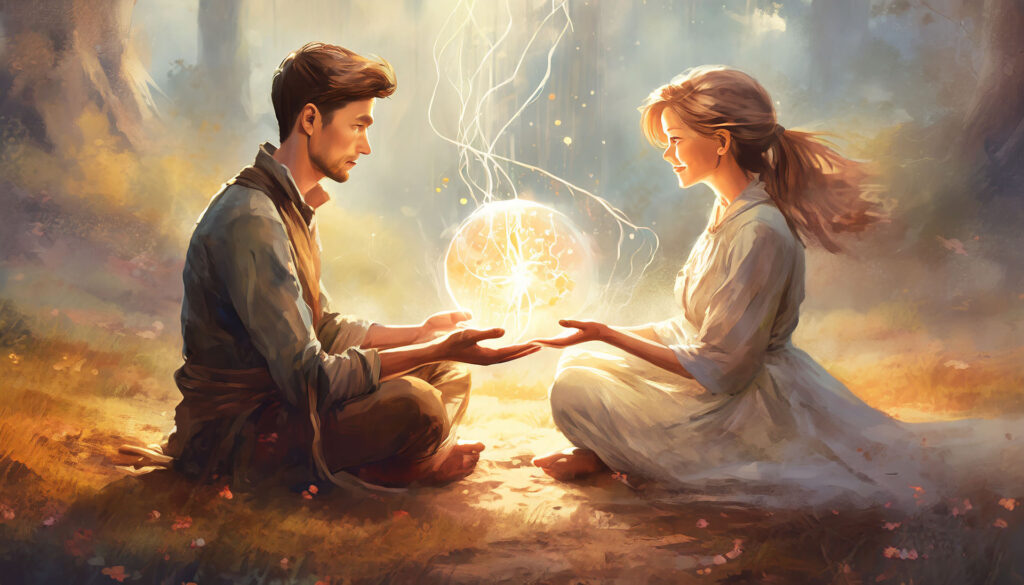
The Aes Sedai of the Age of Legends used this power to do wonders together. Over the course of their incredibly long lives, successive generations of male and female Channelers created a utopian society. One where magic, science, and civic duty were equally embraced and intertwined. Need, want, and lack of purpose were not defining attributes of this Age. The prevailing culture was concerned with personal achievement and societal progress. Somewhere along the way however, this trend got out of hand, resulting in a culture of vanity and petty competitiveness among societal elites. Trivial at first, this trend would sow the seeds of their downfall.
The Opening of the Bore
A team of Aes Sedai researchers, in an effort to discover an undivided source of Power both men and women could Channel, unwittingly bore a hole into the prison of the Dark One.
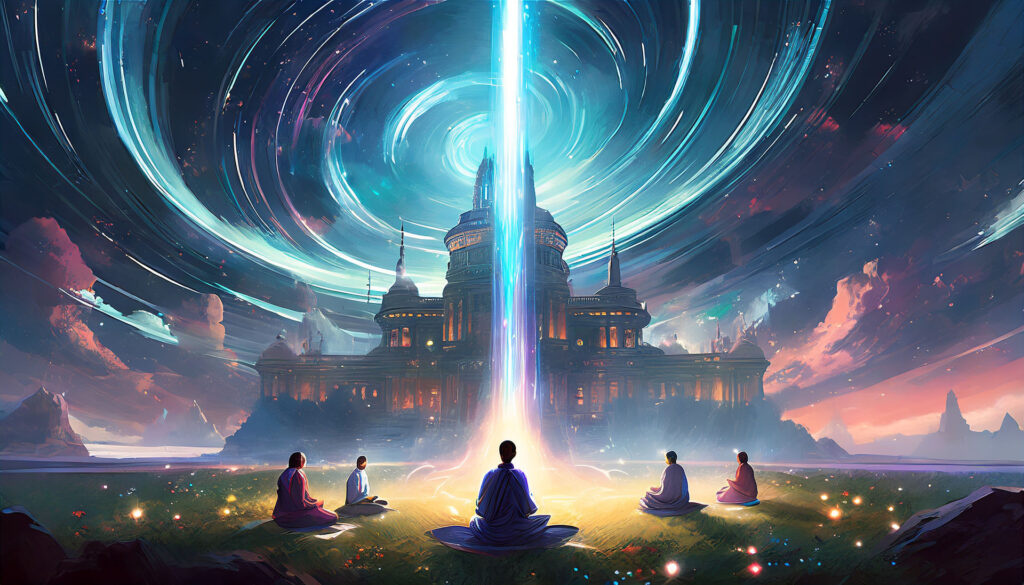
Opening the Bore allowed the Dark One to influence the world. He recruited followers, called Dark Friends; the greatest of which were former Aes Sedai of immense power. He called these select few his Chosen, but the world would come to know them as Forsaken. The Forsaken recruited and even created great armies of men, lesser Channelers (called Dread Lords), and monsters (called Shadow Spawn). They unleashed these armies in an all-out assault on the entire world that would come to be known as the War of Power or the War of the Shadow. It was the first and last war The Age of Legends ever knew.
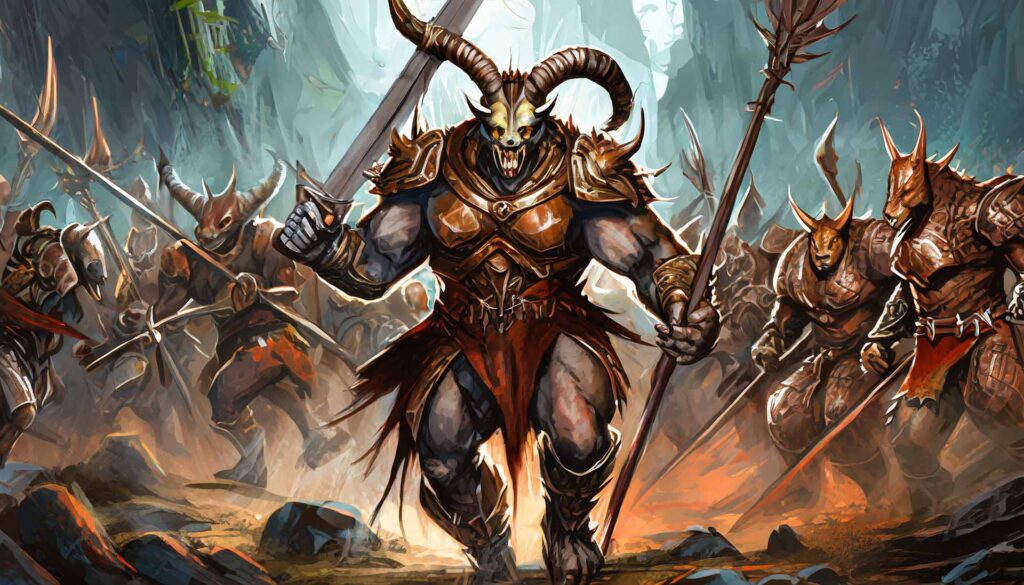
The War of Power & the Prophesies of the Dragon
As the armies of Darkness spewed forth, the world turned to the Aes Sedai to defend them. Lews Therin Telamon, the leader of the Aes Sedai, rallied the Forces of Light. He was the single most powerful Channeler in an age of powerful Channelers. Perhaps as strong as it is possible for a man to be in the One Power. Before the war he was a famous intellect and author who’d risen to be “First Among Servants” in the Aes Sedai order. When war broke out, he re-discovered and mastered its art. Notably becoming an expert swordsman and decorated general. In time, he came to be known as The Dragon.

To be the Dragon is to be a figure of prophesy, a soul bound to the Wheel and woven back into the Pattern (reborn) when the world needs a champion to oppose the Dark One. In the Age of Legends Aes Sedai were in possession of, contributed to, and understood to a high degree, a collection of prophesies (also called Foretellings) known as The Prophesies of the Dragon or The Karaethon Cycle. These prophesies confirmed that Lews Therin (and no one else) was the Pattern’s intended champion.
This caused no end of strife among those on the side of the Light who felt Lews Therin was already over-glorified. Not only was praise heaped on him at every turn, but they felt he was given credit for their accomplishments simply because of his status. It drove some of the most skilled, powerful, and ambitious people in the world to join the Dark One rather than suffer the humiliation of submitting to someone they saw as an inferior.
This fracturing of the unity that made the Age of Legends the Age of Legends was characteristic of the war as a whole. Every person of power and influence on the side of the Light sought personal glory over victory, resulting in a protracted war full of blunders, betrayal, and wasted lives.
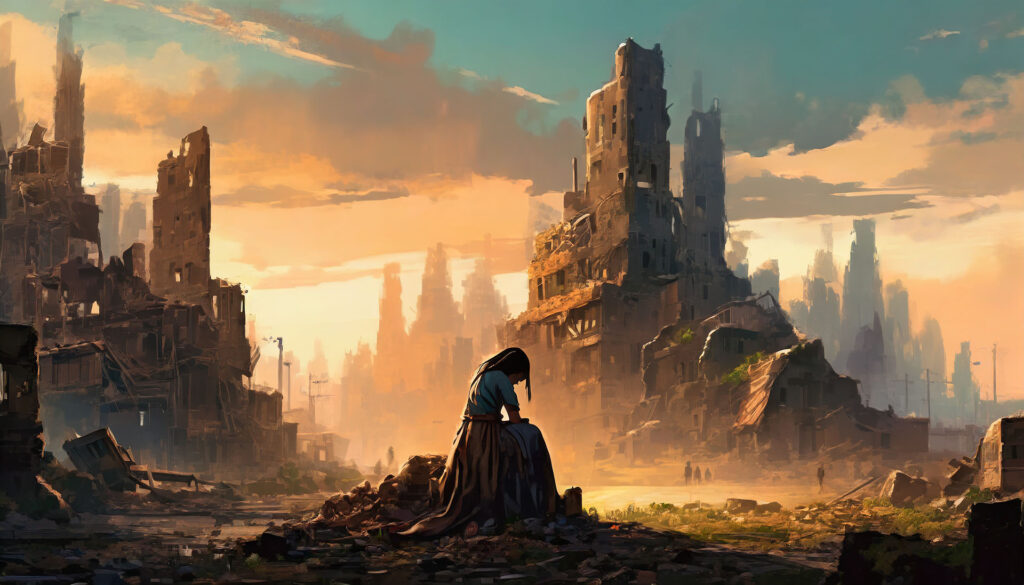
In the end, despite Lews Therin’s power and prowess on the battlefield, despite all of the high technology of the Age of Legends and the best efforts of the Forces of Light, the Forces of Darkness still threatened to overrun them. After centuries of war the world was in a truly desperate place. To make matters worse, a new fracture bigger than all the others was opening inside the Aes Sedai order.
The male and female Aes Sedai disagreed on strategy. It had become clear that the longer the war dragged on, the more likely they were to lose. The Forces of Light had to finish it and finish it decisively, using the resources they had left.
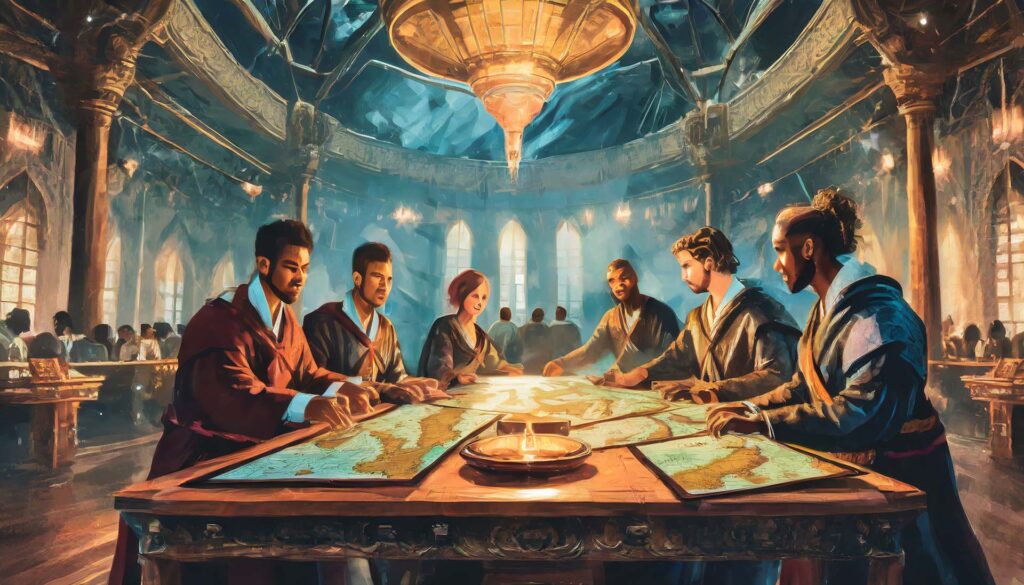
Lews Therin was in favor of an immediate, direct assault on the Bore. He feared that if the Dark One were to widen it further and exert even more control over the world, nothing they might do after the fact could save them.
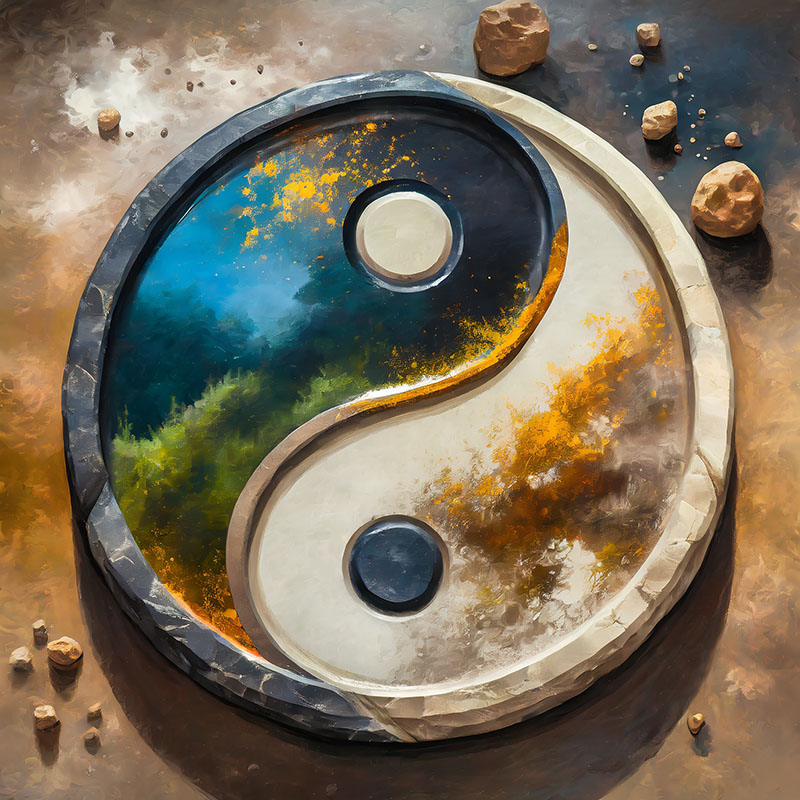
His plan was to construct seven power-wrought seals, place them around the Bore, and use them to seal the Dark One out of the Pattern–where he would lose the ability to affect the world or support his followers.
The female Aes Sedai argued that there were too many unknowns in Lews Therin’s plan. No one had fought the Dark One directly before and it was unclear if it would even be possible or what the consequences might be.
They believed that before any such assault could even be considered, it was necessary to construct objects known as sa’angreal (immense amplifiers of the One Power) to use as weapons. These sa’angreal, one for men and one for women, would be used in unison to destroy the forces of darkness and seal the Dark One’s prison with overwhelming force.
Unable to convince the female Aes Sedai to attack without these sa’angreal, Lews Therin was forced to wait while the women’s plan moved forward. The sa’angreal were created in the form of enormous crystalline statues, one of a man and one of a woman. Called the Choedan Kal they were the two most powerful amplifiers of the One Power ever created. When used together, it was supposed they might be able to crack the world like an egg. Or just maybe, save it from the Dark One.
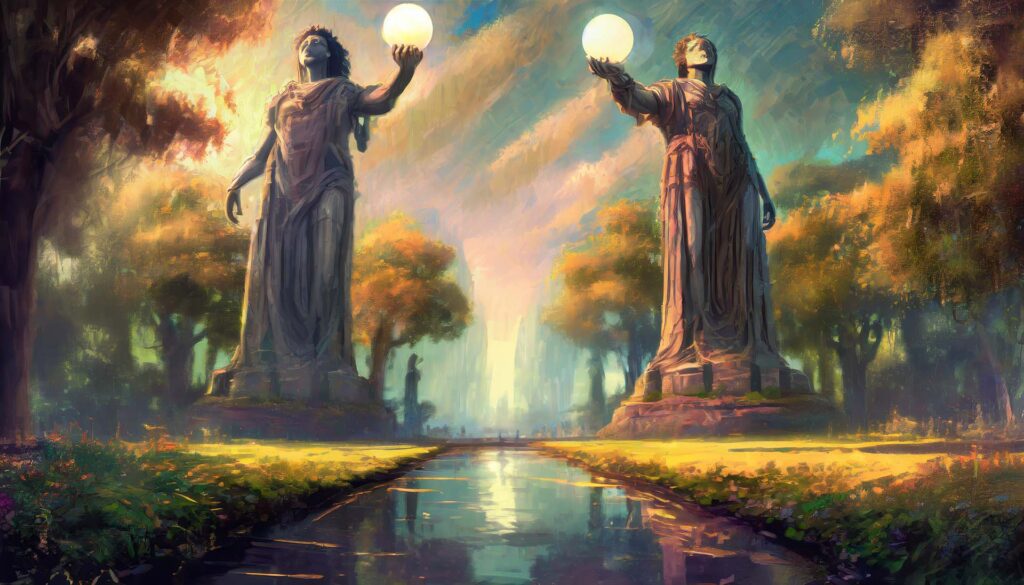
Unfortunately, they never got the chance to find out. Shortly after their construction the Choedan Kal were captured by the Shadow. The only thing preventing complete disaster was a safeguard built into them. To use the Choedan Kal required special “keys” (separate objects of power known as ter’angreal) which were not seized by the Shadow. But to hope that these keys would never be discovered and come into the Dark One’s possession was hopelessly naïve. For Lews Therin, it was time to toss the dice on his initial plan with or without the female Aes Sedai.
The Sealing of the Bore
After the Choedan Kal fell into the hands of the enemy, there was no time to waste. In a last ditch effort to win the war before their own weapons could be used against them, Lews Therin rushed to lead a force of ten thousand soldiers and one hundred thirteen male Aes Sedai (known as The Hundred Companions) in a surprise attack on the Bore.

In an incredible stroke of luck–which was not uncommon for Lews Therin in battle–their attack happened to coincide with a meeting of the Forsaken. When Lews Therin and his companions placed their seals around the Bore and activated them, not only was the Dark One sealed out of the Pattern but so were all but one of the Forsaken.
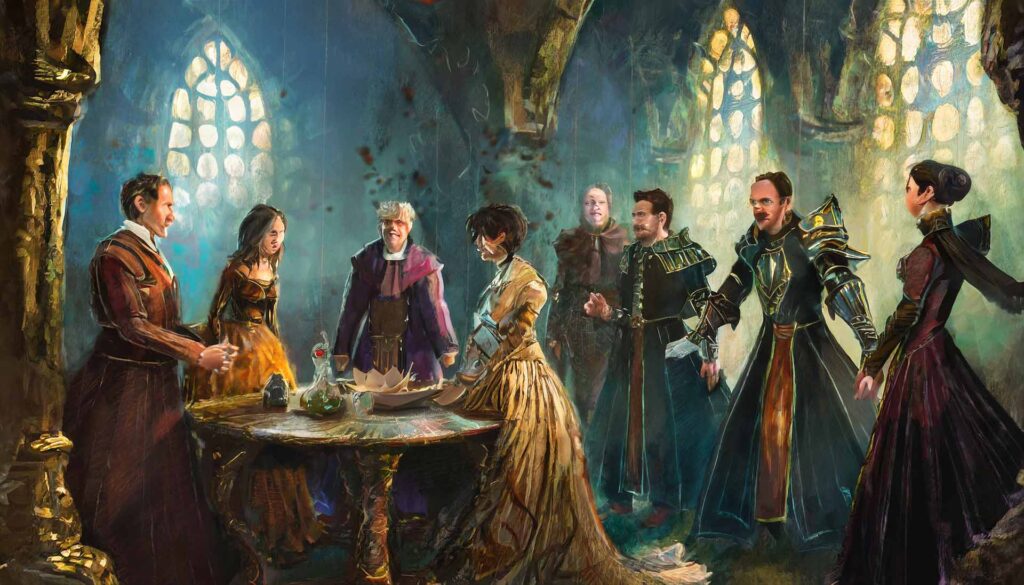
It was a near total victory, but one that would end up costing more than anyone could have imagined. The Dark One, in his counter attack during the Sealing of the Bore, managed to touch the male half of the One Power itself, tainting it and dooming every male Channeler to go insane.
The Breaking of the World
Lews Therin went mad. In his madness he killed his entire family and everyone he loved, earning a new name that would follow him throughout history: Lews Therin Kinslayer.

In a final moment of clarity given to him by Ishamael, the highest of the Forsaken, who alone escaped imprisonment at the Bore, Lews Therin was made to realize what he had done. In his overwhelming grief and despair he committed suicide by drawing in all of the Power he could and releasing it on himself, creating the mountain known as Dragonmount in the process.
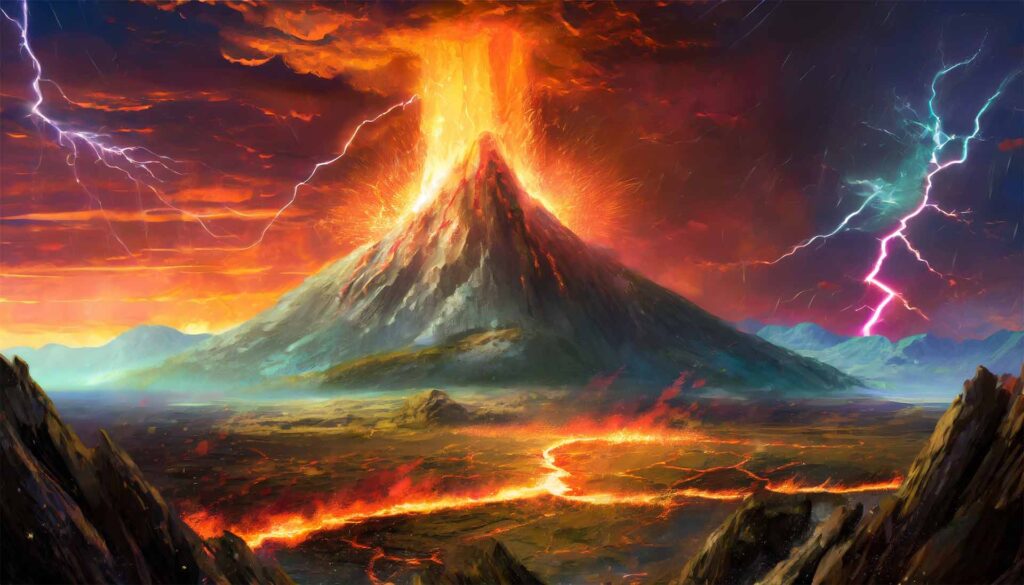
For those still alive in the Age of Legends, Lews Therin’s murderous rampage and spectacular self-destruction were just the beginning of the horrors that would bring their age to an end. Every male Channeler went mad and in their madness reshaped the world. They laid low entire cities, caused tidal waves, raised mountains, and brought to bear every form of destruction that could be wrought with the One Power.
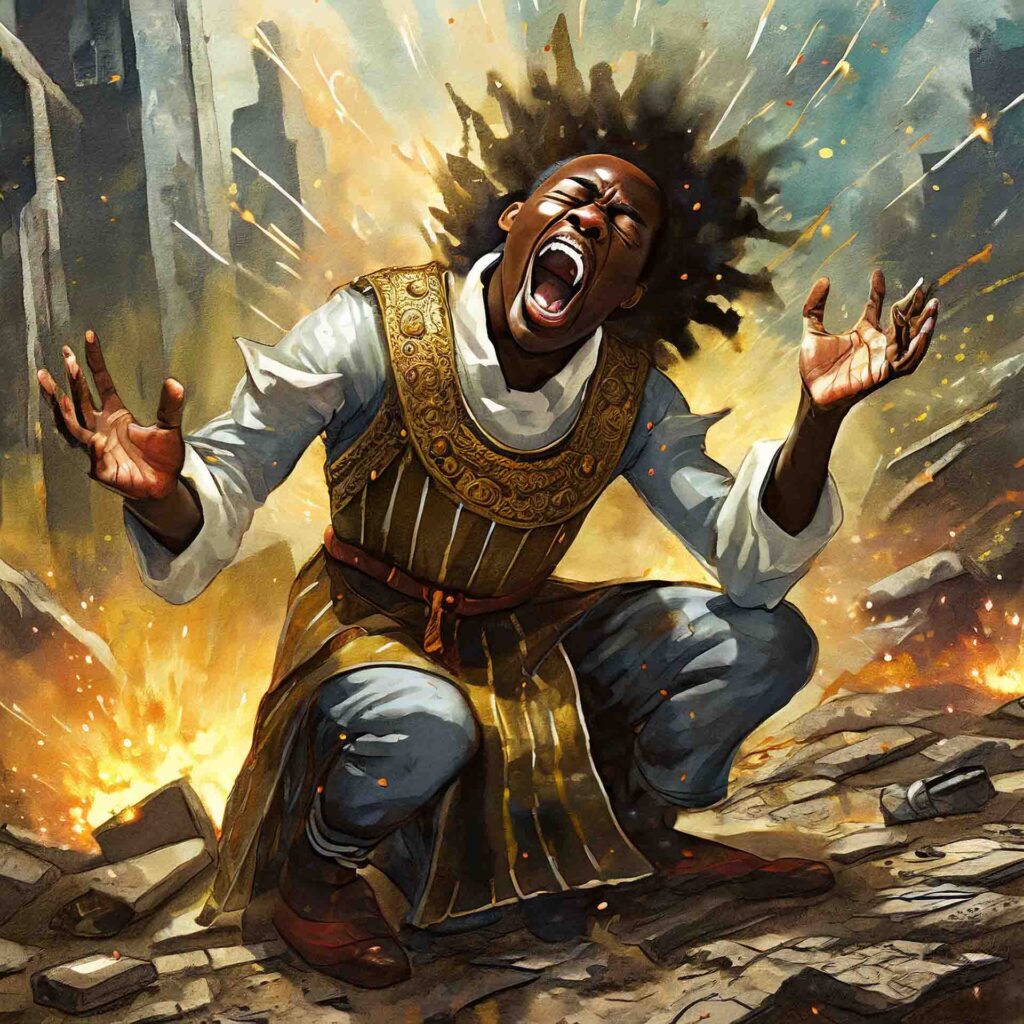
This period would come to be known as the Breaking. It’s unclear how long it lasted, but it ended when the remaining female Aes Sedai were finally able to hunt down and gentle (remove the ability to wield the One Power) or kill every last male Channeler in existence.
The Third Age
The dawn of the Third Age was a terrifying time to be alive. The world had survived the Breaking, but now it was broken. The Bore had been sealed, the Dark One was imprisoned again, and so were his most powerful servants. That much of Lews Therin’s plan had worked, but at a terrible cost. Civilization collapsed completely during the Breaking, the land itself was unrecognizable, and lawlessness ruled.
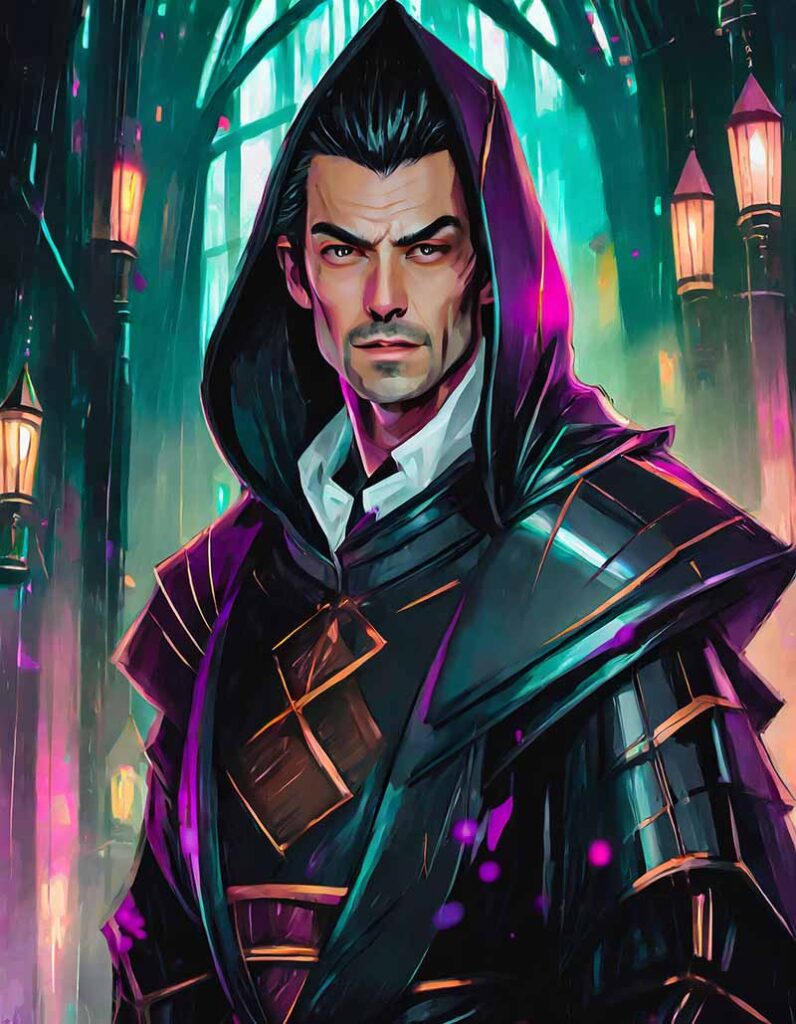
Matters were made worse by the lingering remnants of the War of Power. The armies of darkness were never destroyed. Those that survived the Breaking continued to plague the helpless masses scattered across the land. Perhaps worst of all, Ishamael, foremost of the Forsaken, still lived and exerted his influence upon the world. Kept ageless and safe from the taint by the Dark One, he re-grouped and re-organized the forces of darkness.
By keeping his existence a secret (and the imperfect nature of the Seals on the Bore that kept him faintly connected to the Dark One) Ishamael could continue his war against the Light indefinitely. The Dark One’s most successful strategy had always been to exploit the cracks in his enemies’ defenses. In effect, allowing his enemies to destroy themselves. After the Breaking, there were nothing but cracks left and Ishamael intended to make the most of them from the shadows.
The Founding of the White Tower
The remaining Aes Sedai took it upon themselves to put the world back together and to ensure that nothing like the War of Power or the Breaking of the World was ever allowed to happen again. They founded the island city of Tar Valon and began construction of their new headquarters: The White Tower.

The construction of the White Tower took one hundred years of collaboration between Aes Sedai Channelers and Ogier Builders to complete. During that time the new organizational structure, laws, and foundational traditions of the all-female Aes Sedai order were firmly established; including: The Amyrlin Seat (an elected leader), Ajahs (societies within the order who specialize in different disciplines), The Hall (a legislative body responsible for electing the Amyrlin Seat and acting as a check on her power), and so much more.
The White Tower as an institution would function as the light of civilization in humanity’s darkest hour. Through sheer grit, determination, and cunning the women who founded the Tower brought society back from the brink of total annihilation. But they were not often thanked for it.
Tensions between those who could and those who could not wield the One Power were at an all time high. The Aes Sedai had garnered a reputation of ruthlessness as they brought order to a broken world. Then there were the men who could Channel. At any moment any young man coming of age might manifest the ability, go insane, and destroy everything and everyone around him. These men were an ever present threat to society and a constant reminder of both the failure of Aes Sedai in the past and their unwanted necessity in the present.
To help alleviate this tension and establish trust in the Aes Sedai order again, the Three Oaths were introduced. Oaths sworn on a special ter-angreal that bound the oath keeper to their word, making it impossible to break. These oaths were required of all White Tower initiates upon becoming Aes Sedai.
1) To speak no word that is not true. 2) To make no weapon with which one man may kill another. 3) Never to use the One Power as a weapon except against Shadowspawn or Darkfriends, or in the last extreme defense of her own life or that of her Warder or another Aes Sedai.
Even with these oaths in place and their ongoing service to the world, it was still hundreds of years before their first major success in rebuilding a stable civilization.
Compact of the Ten Nations
From the ashes of the Breaking, ten nations arose: Coremanda, Essenia, Manetheren, Eharon, Aelgar, Aramaella, Almoren, Aridhol, Jaramide, and Safer. Approximately two hundred years after the Breaking these nations formed a compact to band together against the remaining forces of the Shadow. It was largely organized by Queen Mabriam en Shereed of Aramaelle who was also an Aes Sedai. The compact lasted eight hundred years.
The Trolloc Wars
In numbers and ferocity unseen since the War of Power, Dreadlords and Myrddraal lead vast armies of Trollocs (and to a lesser extent Dark Friends and other Shadow Spawn) against the Ten Nations in a long and brutal war. It lasted three hundred fifty years and by the end of it the Compact of Ten Nations was dissolved and several of the nations themselves no longer existed.
The Rise and Fall of Artur Hawkwing
When The Trolloc Wars finally ended the Compact of Ten Nations was shattered, some of the Ten Nations no longer existed, and the rest were severely weakened–including the White Tower. The land was ripe for the taking. Warring factions and false Dragons (men claiming to be Lews Therin reborn) tried, but it was Artur Paendrag Tanreall, a young king with a sword named Justice, who succeeded where no one else could.
He was tall with dark eyes, a hooked nose, and a deep booming voice perfect for issuing commands that cut through the noise of battle. He earned the name Hawkwing for the speed at which his armies could march and he took for his sign a golden hawk in flight. Despite his commanding presence, natural leadership abilities, skill as a general, and the circumstances of his time–one thing undoubtedly accounted for his success above all others. He was an extremely strong ta’veren; someone who’s life-thread becomes central to the Pattern for a time, forming a Web of Destiny around them.
The resulting effect for Hawkwing was such that those around him would say or do things they might only say or do one time in a million, almost always in his favor. Battle luck was on his side and chance or happenstance seemed to always line up with his goals.
While not well understood it is thought that the Wheel spins out ta’veren when balance needs to be restored to the Pattern. Their lives, while always influential, have fewer choices than the average person’s. Even if they attempt to go their own way, “The Wheel weaves as the Wheel wills.” In the end, they are tools of the Pattern (like the Dragon) and their lives serve its needs above all else.
For Artur Hawkwing, this meant not only great success, but also great tragedy. He united all of the lands west of the Spine of the World, converting the former Ten Nations into a single empire. In the process he took for himself an advisor named Jalwin Moerad who was actually Ishamael in disguise. It was through his advise that the other requirements of the Pattern were extracted from Hawkwing and a new cycle of turmoil was unleashed upon the land.
Jalwin convinced Hawkwing to send his son, Luthair Paendrag, to conquer Seanchan and his daughter to conquer Shara. He sowed seeds of dissension between Hawkwing and the White Tower. His task was made easy by the bungling Amyrlin, Bonwhin, who tried and failed to make Hawkwing a puppet ruler.
Driven to rage against all Aes Sedai, Hawkwing laid siege to Tar Valon for twenty years. Though his siege nearly destroyed the White Tower it ultimately lead to his own death. In the end he wasted away from a healable disease, unwilling to let Aes Sedai heal him with the One Power. On his death bed it was said that he regretted nothing more than sending his children away from him.
The War of the Hundred Years
The death of Artur Hawkwing precipitated one hundred years of war and political upheaval as anyone with the hint of a claim vied for control of the empire. In a thousand battles, skirmishes, and political intrigues the empire was fractured many times over. Nations rose and fell, eventually settling into the nations of the late Third Age, when the main events of the series take place.
The Late Third Age
The countries of Saldaea, Kandor, Arafel, Shienar, Cairhein, Tear, Illian, Murandy, Andor, Altara, Amadicia, Tarabon, Arad Doman, and the free cities or city states of Far Madding and Tar Valon make up the land that was once Artur Hawkwing’s empire. By the late Third Age they have all had time to mature (well over a thousand years) into their own distinct kingdoms with rich histories, old family houses, and unique cultures.
While much of consequence happens during the period of the late Third Age, few are more important to setting up the main events of The Wheel of Time series than those in and around the Aiel War.
The Aiel War
The Aiel were a people apart from the countries west of the Spine of the World. The Aiel had lived in the Waste since the Breaking and were never brought into the Ten Nations, Hawkwing’s Empire, or the nations of the late Third Age. Before the Aiel War not much was known about them. They were commonly thought to be savages who lived a primitive existence full of strange customs. Customs whose details varied greatly depending on who was explaining them. The one detail that never changed though was the Aiel’s reputation as deadly warriors. The Waste was littered with 3,000 years worth of bones belonging to those who attempted to enter or cross it without their express permission.
The only people to have a truce (or agreement of any kind) with the Aiel were the Cairhienen. Out of gratitude for helping their people in the time immediately after the Breaking, the Aiel gave their benefactors’ distant descendants, the late Third Age country of Cairhien, permission to cross the Waste and trade with the lands beyond. This was the basis for Cairhien’s silk trade, which made them a wealthy nation. As a symbol of their friendship the Aiel also gave Cairhien a sapling from the Tree of Life, Avendesora, which unbeknownst to anyone but Aiel leadership, they had guarded for over 3,000 years. It was a marvel from the Age of Legends thought to have been lost in the Breaking.
The sapling grew into a sacred chora tree, Avendoraldera, and was a treasure of priceless value. When the vain King Laman of Cairhien cut it down to create a new throne for himself, the Aiel were enraged enough to do something they had never done before. Four of their twelve clans crossed the Dragon Wall in force to sack Cairhien and kill King Laman.
The city was quickly ruined, its famous “topless towers” toppled, and the Aiel took a fifth of the city’s wealth for themselves. But Cairhien had many allies. Troops from the borderlands, Andor, Illian, Tear, and perhaps more combined in an attempt to turn the Aiel back. The final battle of consequence in the conflict, known as the Battle of the Shining Walls, took place outside of Tar Valon near the slopes of Dragonmount. It was in this battle that King Laman was slain.
Upon completion of their task, the Aiel returned to the Waste. The peoples of the “wetlands” took it for a victory, but the wise knew that it was the Aiel’s decision to retreat and not their armies’ skill that won the day, let alone the war.
The Secret Prophesies of Gitara Moroso
While the above account sums up the Aiel War accurately, it is far from the full story. Several seemingly minor events occurred in its periphery that would, twenty years or so later, shake the world to its foundations.
Four years before the war the Daughter Heir to the Andoran throne, Tigraine Mantear, and her brother Luc, disappeared. They had each received separate prophesies by Gitara Moroso–the Aes Sedai counselor to their mother Mordrellen, the queen; the contents of which, no one else knew.
Much later it was discovered that as a result Luc went to the Blight, where he became a tool of the Shadow. Tigraine went to the Aiel Waste where, due to an impressive display of dedication, she was allowed to join their female-only warrior society the Maidens of the Spear. She also became the lover of Janduin, clan chief of the Taardad Aiel. When the time came, he was the battle leader chosen to lead the clans across the Spine of the World to avenge Laman’s Sin.
By the time the Battle of the Shining Walls took place, Queen Mordrellen had died without an heir and house Mantear had lost the throne of Andor. Gitara Moroso had returned to the White Tower where she served as Keeper of the Chronicles, the right hand of the Amyrlin Seat. Tigraine (known among the Aiel as Shaiel) was pregnant with Janduin’s child and near due. Inexplicably she took part in the battle, was wounded, and died giving birth on the slopes of Dragonmount.
At the moment of the baby’s birth, overlooking the battle from within the White Tower, Gitara Moroso would utter a final prophesy:
He is born again! I feel him! The Dragon takes his first breath on the slopes of Dragonmount! He is coming! He is coming! Light help us! Light help the world! He lies in the snow and cries like the thunder! He burns like the sun!
Immediately after this prophesy, she died. Only three people had heard it: the Amyrlin Seat, Tamra Ospenya, and two Accepted (Aes Sedai in training) who were attending her. Their names were Siuan Sanche and Moiraine Damodred.
The Desperate Search for the Dragon Reborn
Not long after Gitara Moroso’s final foretelling proclaimed the birth of the Dragon Reborn, the Amyrlin Seat was found dead. It was assumed that she died naturally and peacefully in her sleep. However, a rash of deaths in the White Tower claimed the lives of everyone the former Amyrlin had confided the prophesy to, suggesting something more sinister was unfolding.
It would later be revealed that the Black Ajah, a secret society of Dark Friends within the Aes Sedai order, had kidnapped the Amyrlin and tortured her to death. While under the question she revealed the names of every Aes Sedai she had told about the prophesy of the Dragon’s rebirth. Somehow, she was able to withhold the names of the two Accepted who actually witnessed the prophesy while attending her. As a result, for twenty years Siuan Sanche and Moraine Damodred along with their Warders (sworn bodyguards and companions to Aes Sedai) were the only people on the side of the Light who knew that the Dragon had been reborn.
For more than 3,000 years the knowledge that one day the Dragon would be reborn, as he had been in every age, hung over the world like a cloud of doom. If he were born again, it meant that the world needed a champion to face the Dark One. But how could the world depend on a child who would become a madman? And what might happen if the Shadow found him first?
Siuan and Moraine made a pact. The deaths in the Tower meant they could only trust each other. So they dedicated themselves to finding, protecting, and guiding the Dragon Reborn to victory. For the sake of the world, the Light, and the Pattern itself.
Due to circumstances immediately after they were raised to full Aes Sedai, their paths diverged even if their mission did not. Siuan was singled out for her aptitude as an intelligence analyst and put to work in the Blue Ajah’s spy network at the White Tower. This left Moraine the task of searching outside the Tower while Siuan provided support from within–using her political acumen to gain power and influence when possible.
Following a wispy trail of rumors, stories, and half-forgotten memories Moraine and her Warder Lan spend the better part of two decades running down every lead they could find concerning the Dragon Reborn. At last their search leads them to a sleepy backwater in Andor called the Two Rivers. It’s a secluded place the outside world rarely touches, full of stout-hearted farm-folk and those tough enough to scrape a living out of the Mountains of Mist. The kind of place that, had he been raised there, the Dragon Reborn himself may have been able to avoid notice. Hopefully by those of the Shadow as well as those of the Light.
Begin Reading: The Eye of the World (WoT Book 1)
There are few books I can recommend more wholeheartedly than The Eye of the World. It’s a true classic of the fantasy genre, an irresistible call to adventure for main characters and readers alike. It is not without flaws (and neither is the series as a whole) but for readers who love fantasy and want to immerse themselves in a rich world of fiction it’s one of the best series openers of all time. I can only hope it brings you as much pleasure as it has me over the years.

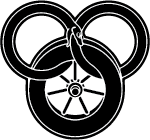
Hi Nathan, I have loved the Wheel of Time series for years also. This is a well written and wonderful overview of the history before the first book. I wish I’d read it before hand. I’m really enjoying the t. v. series. It’s just how I imagined it. Thanks for this. Hope you’re both doing great.
Thank you so much Paul! I wasn’t aware you’re a WoT fan too! We’ll have to make some time to chat about the series and the new show :)
Thanks for putting these. I have read so far 3 books. 4th going on. Watched tv series. I am so into it. But same time, concept is confusing. Book has so many plots connect to.
This summary gave deep insight. Thanks for your time.
Appreciate if you have also do book wise summary.
Thanks Priyabrata, I hope to make time to do a book summary like this for each of the fourteen books but it will probably take me years lol.
I love finding other people who love tWoT! This was a wonderfully written synopsis of the world and prehistory of the series. As for re-reads, I have been reading for 27 years now. I literally have a few books going at any given time, and not just because I help run a few of the tWoT pages on Facebook (I can be on one book, remember something then go looking for it which will start me on THAT book at the same time, and so on.)
I look forward to seeing what else you write about tWoT (have you read the BWB, Companion, Origins, and the two Unfettered stories?)
Thank you Kristi! I’ve read the companion and I have origins queued up but haven’t started it yet. Somehow I haven’t heard of the Unfettered stories. Looking forward to them!
I can’t tell you how much I enjoyed this article. An amazing and rewarding effort! Kudos on the wonderful artwork as well. Signing up was a no-brainer.
I’ve been wanting to dive in for *years*. Did start at one point, and I have “The Fires of Heaven” sitting on one of the bookcases in the hallway. Why haven’t I actually begun in earnest? Not sure. I think because things kept getting in the way, and it’s not exactly casual reading. But if I can make my way through “Malazan Book of the Fallen” (definitely not an easy read), why not WoT?
Not sure if the Prime series is helping or not. I’m sort of ambivalent on how the characters are represented, although I do like Moiraine well enough.
However, your backstory synopsis really has me fired up and seems to be just the impetus I need given everything else that’s happened. The final spark on the kindling that’s already been laid out.
Just a couple of side notes on the site itself.
1) I’m surprised you don’t have zoom allowed. First thing I do when I see a map is try to stretch it out so I can see details lol. Especially with my reading glasses, and I thought you’d want that as well. I don’t know what it is with WordPress, but it’s turned off. Something like this in the turns it on:
2) I believe you misspelled “Foretellings” around the image of Lews Therin.
3) Under “Compact of the Ten Nations” did you mean to say “form a compact to *band* together”?
4) Carhein is actually spelled Carhien.
Thank you so much Terry. If you do decide to give WoT a read, I’d love to chat about it as you go. If you’ve read all of Malazan Book of the Fallen, you’ve got the perseverance to make it through another long series! Speaking of which, a while back I read Gardens of the Moon at your recommendation and loved it.
1) I do mean to have zoom enabled on the map for this post and future posts. I’m in the process of creating my own hand drawn vector map that will allow me to provide high resolution versions of the map for any number of uses. When I’m ready to add that to the site I’ll also implement zoom functionality.
2-4) Thank you! All fixed. Sharp-eyed as always!
This is a passion project for me so the timeline of publishing new WoT content is pretty irregular. But I hope I can accurately say that anything I put out will be high quality.
Nathan,
Can you rank Lord of the Rings/Silmarillion and The Wheel of Time and Malazan?
I started Gardens and got 3/4 through but the poor writing and drabness had me questioning whether to continue. I’ve read Tolkien several times–believing The Silmarillion to be possibly the best book ever. And I read the first 4-5 of The Wheel 30 years ago but never finished them.
Cheers,
CA
Hm. My personal ranking would probably go Lord of the Rings/Silmarilion (and The Hobbit–it was the first novel I ever read), The Wheel of Time, and then Malazan. I’ve spent way more time reading WoT over the years, and it could easily be my number one, but I don’t think we’d have WoT if it weren’t for LotR.
While LotR and WoT are my top two of all time, Malazan would probably be pretty far down on the list of my favorite fantasy series. That said, I’ve only ready Gardens of the Moon, so it’s not really fair to rate the whole series.
Wow. Just Wow. So many questions answered! Thanks so much for the brilliant article.
Any chance you know where to go for a compendium? As you get further into the series, the plots and sub plots and sub sub sub plots with the characters gets mightly hard to keep together. Even after multiple reads, I can never keep track of who’s who in the minor character zoo.
Thank you! There are lots of online wikis and fans sites. However, I really like the official Wheel of Time Companion book. I leaned heavily on it to create this post.
I just started the series am 1/4th into reading Book 2. I have finally found another well written, richly charactered, fantasy series that has held/intrigued me enough to continue. While enjoying it, greatly at times, the # of characters, events/ages/places, etc was & is distracting, challenging and frustrating. I searched online for help, assistance to meld it all together. I carefully perused through the many search results and chose this one site/link to open for the help I needed to hopefully “explain, enrich & continue” this immense series.
I CHOSE THE RIGHT LINK!
One quarter into Book 2 – I did’nt think it possible to “meld” this “World of Time” into any real or complete semblance. After reading your description, I now feel, know that it has & did! THANK YOU FOR AN OUTSTANDING, EASILY EXPLAINED & UNDERSTOOD ANALYSIS!
Another MASTERFUL accomplishment, was overcoming the “Spoiler” Fear I had, which you somehow did not spoil!! you were upfront, forthcoming and explained, warned how impossible it would be to render a meaningful, complete summary without revealing at least some spoilers. And for those readers wanting NO spoilers what so any, to NOT his rendition. Being somewhat worried myself, you eased that with your upfront, fair & honest explanation on spoilers. You also explained your intention and goal to write this review in a careful manner so as to not reveal major plot-lines or spoils.
And you somehow, miraculously succeeded!
With utmost Respect, Appreciation Sir!
Ambrose
Thank you Ambrose, that’s some high praise!
Thanks for this! I’m now on book 6 and sometimes get lost on the characters and sub plots that exist. This summary definitely helps to fill in the gaps. You should do a recap of the books.